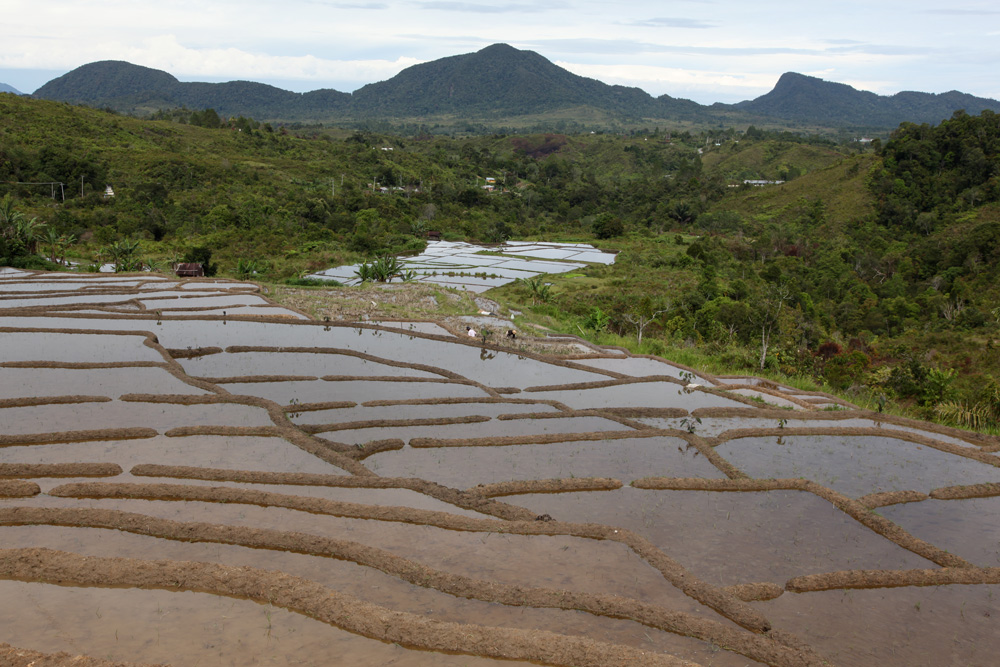JEAN PAUL BARBIER-MUELLER
The Batak have been known for a long time. The geographer Claudius Ptolemy, without naming them, mentioned their port of Barus, or Baros, on the shores of the Indian Ocean, from which were exported camphor, reputedly the best, and benzoin resin. Marco Polo alluded to these “cannibals” of North Sumatra. Beginning in the sixteenth or seventeenth centuries, they acquired firearms, raised horses, and traded with Dutch and Portuguese navigators. They invented a written language inspired by Old Javanese, itself derived from Sanskrit. Their villages were independent political entities and were constantly at war with their neighbours, which led to a cannibalism limited to symbolic acts. They are divided into six major groups, with the central group, the Toba, living around the eponymous lake, located over a volcanic crater. The North Karo and the Central Toba have been meticulously studied, but the Western Pakpak have not. One of the five Pakpak subgroups, the Kalasan, have been completely overlooked by ethnology.
Between 1974 and 1999, the author made many visits to Sumatra. As a historian, he reconstituted the genealogy of many clans, which allowed him to provide approximate dates for the stone sarcophagi, for example. Between 1985 and 1999, he discovered the Kalasan, and he mentions them in a book published in 1999. He now presents in detail that group of Pakpak, whose five clans were founded by a Toba ancestor in the sixteenth century. From the Pakpak, the Kalasan adopted the practice of cremating the bones of the dead and of constructing stone equestrian effigies of their ancestors. From the Toba, from whom they had separated themselves, even while maintaining neighbourly relations, they retained the adat, the customary rule of divine origin. A preliminary study of the Toba’s mythology and religion, as well as of their social and political organization, is therefore necessary in order to introduce this little-known people: the Kalasan.






